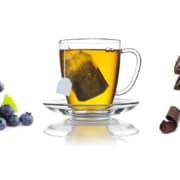Standing Committee on Bioactive Recommendations
Growing evidence suggests that lutein for vision and flavan-3-ols for cardiovascular disease could be candidates for quantified recommended intakes. In 2014, Elwood et al. pointed out the challenges and suggested that a framework be developed to recommend bioactive intakes not currently covered by approaches used to establish nutrient intakes to prevent deficiencies. A standing committee of experts subsequently developed a 4-part framework for evaluating human evidence and where appropriate quantifying an intake range for health promoting dietary components that do not fit in established nutrient frameworks based on evidence of deficiency. The framework was endorsed by the American Society of Nutrition.
Read more: Perspective: Framework For Developing Recommended Intakes Of Bioactive Dietary Substances
This work was supported by IAFNS Bioactives Committee. Visit our Cognitive Health Committee to see IAFNS’s ongoing work on foods, diets and bioactives for health promotion.






